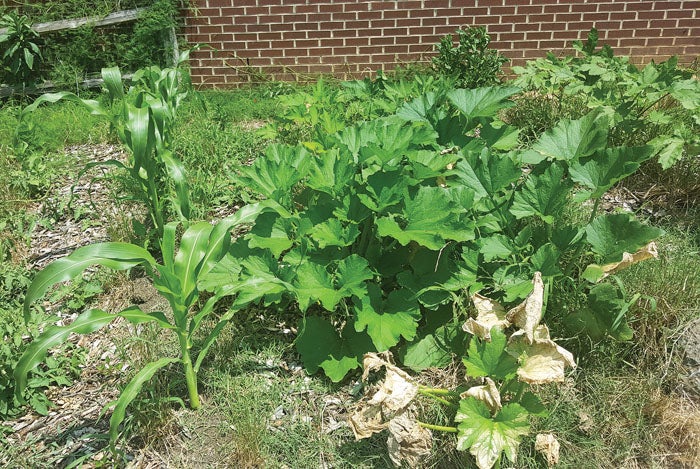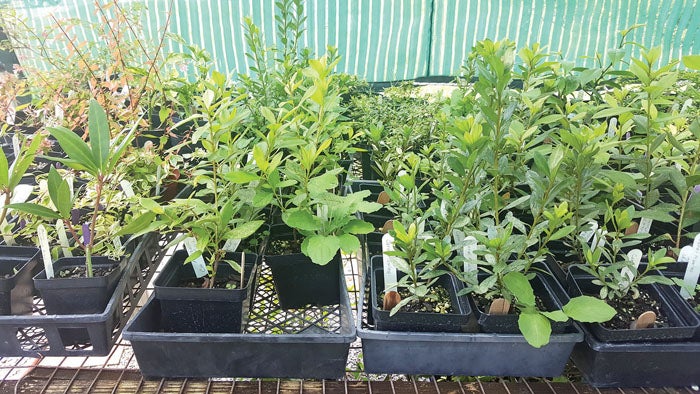Gardening not so tough if you take the right steps
Published 12:00 am Friday, July 21, 2017
By Andrew Morrow
Cooperative Extension intern
While creating your own garden may sound like a lot of tiresome work and effort, it is actually a lot easier than one would think. The key to growing a successful garden is planning and by following this four-step plan, you can enjoy the rewards of a plentiful garden in no time.
The first step is to select a site to grow your garden. There are a few things to consider when choosing a site: sunlight, water, air, drainage and fertile soil. Pick an area where the plants can receive around eight hours of sunlight.
It is wise to select a place near a water source, like next to a hose. This is so you do not have to lug water a far distance to your garden.
The soil that you plant in will have a huge effect on the outcome of your garden (unless you have a potted garden — I’ll go into depth on that later), so make sure to get the soil tested before you take any action. Soil tests give insight as to the quality of your soil, what the pH is, the percent of phosphorus-potassium in the soil (these nutrients will improve your plants’ ability to grow and are found in fertilizers), and steps to improve it. Nitrogen is not tested, but the recommendations will be provided in the results.
The second step is planning. Here are some things to keep in mind when designing your garden: the type of garden you want, what vegetables/fruits you will grow, and when you need to plant them.
There are three main types of gardens: container gardens, raised gardens and in-ground gardens. Container gardens are planted in pots, which means less work overall and useful if space is an issue.
Raised bed gardens are, as the name implies, gardens above ground level. The benefit of this type of garden is that the soil heats up quicker and stays warm longer, which will extend your season. Finally, we have in-ground gardens, the traditional type, more suited for large areas of land.
When you have decided what type of garden you want, it is time to choose your plants. There are two categories of vegetable plants, warm season and cool season. Warm season plants, like beans, cucumbers and tomatoes, need to be planted when the soil has warmed up and generally like temperatures above 70 degrees. Cool season plants, like broccoli, spinach and carrots, are to be planted in the beginning of spring/fall and prefer temperatures at or below 65 degrees.
After the planning step, it is time to move on to soil preparation/planting. Once you have tested your soil – and you should always get it tested every three to five years after the initial testing – you can follow the directions given with the soil test report.
Although it may seem like common sense to some, you should add organic materials such as compost to your garden each year, as the plants need the nutrient-packed soil.
Now that you have sorted out your soil, you can move on to planting. There are two ways of growing plants, through seeds or through transplants. Seeds are a simple way of planting; just follow the directions on the seed packets. The packets will tell you how much space you need to give each seed so it can properly grow.
Transplants are when you take an already growing plant and transfer it into your garden. It should be noted that transplanting will be the more expensive method.
Finally, when all the previous steps have been completed, it is time to nurture the plants until they are ready to produce. Water the plants as needed by doing the finger test — to see whether you need to water them, dig your index finger into the soil about two inches down near the plant. Feel if the soil is moist, if it is not, water the plant.
A few months from the time when you planted your garden, you will be enjoying the fruits (or vegetables) of your labor and wondering why you haven’t planted a garden sooner. For more information, check out:
https://newhanover.ces.ncsu.edu/home-vegetable-gardening-2/
https://content.ces.ncsu.edu/home-vegetable-gardening
https://wake.ces.ncsu.edu/wp-content/uploads/sites/9/2017/02/Home-Vegetable-Gardening.pdf?fwd=no
https://content.ces.ncsu.edu/home-vegetable-gardening-a-quick-reference-guide







